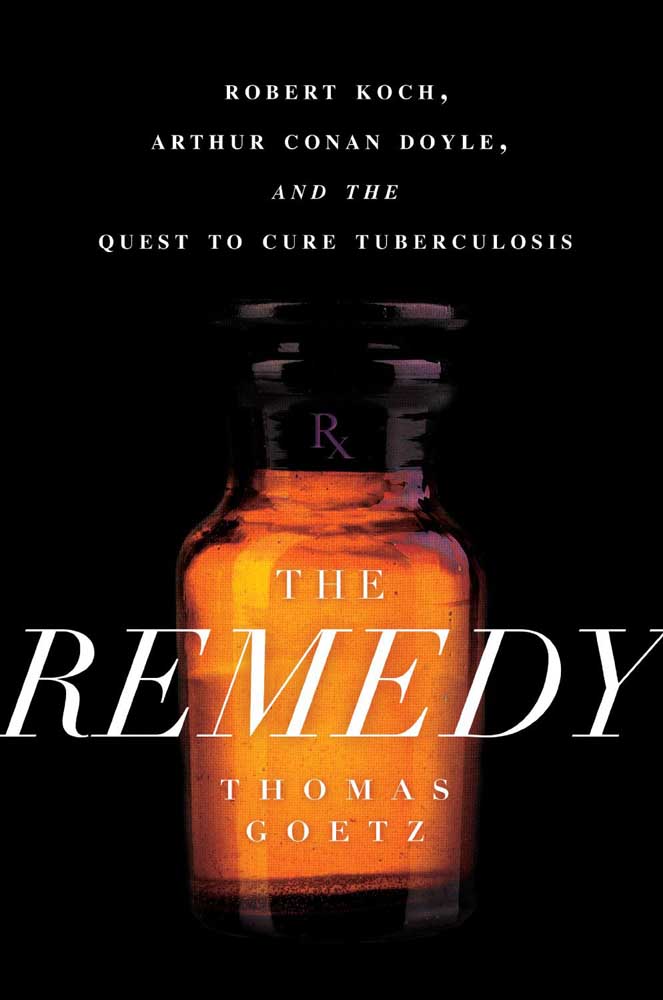‘Remedy’ is a thrilling physician’s tale
Published 12:00 am Sunday, April 13, 2014

- "The Remedy: Robert Koch, Arthur Conan Doyle and the Quest to Cure Tuberculosis" by Thomas Goetz
“The Remedy: Robert Koch, Arthur Conan Doyle, and the Quest to Cure Tuberculosis” by Thomas Goetz (Gotham, $27)
Germs and detectives might not seem like they’re connected. But their link, as a certain fictitious sleuth might say, is elementary.
In Thomas Goetz’s fascinating and entertaining new page-turner of a book, “The Remedy: Robert Koch, Arthur Conan Doyle, and the Quest to Cure Tuberculosis,” we are transported to the final decades of the 19th century. The age of electricity was dawning. And in laboratories and on imaginary London streets, men armed with microscopes and the power of observation first used science to tackle the twin scourges of crime and disease.
“The Remedy” is a true tale about how deductive reasoning and the scientific method first captured the public imagination — thanks in no small measure to the work of two country doctors.
Before Conan Doyle got rich with Sherlock Holmes’ story, he was a small-town English physician with dreams of becoming a famous writer. And before Koch discovered the cause of tuberculosis, he was a provincial German physician with the dream of becoming a famous scientist. Both practiced a profession in which “bad air” was believed to cause diseases and in which blood-letting devices were commonly used.
Relegated to a small practice in a rural corner of Prussia, Koch began a small scale but systematic study of a scourge of his community: anthrax, a serial killer of sheep and cattle, and sometimes humans.
The “germ theory” of disease was not then widely accepted. With a microscope provided by his wife and with farm animals as his first test subjects, followed by legions of white mice (Koch pioneered their use in laboratories), Koch not only found the anthrax bacterium in his microscope, he discovered its entire life cycle. Then, with a series of simple but bold experiments, he sought to prove conclusively that it caused the disease.
Only a small number of scientists embraced “germ theory.” Making germs part of medical conventional wisdom required a “radical” shift in scientific thinking, Goetz writes. The German doctor wanted “(n)ot just to prove the existence of one disease, but to change the conception of all disease.”
Goetz, former executive editor of “Wired” and author of “The Decision Tree: Taking Control of Your Health in the New Era of Personalized Medicine,” employs great flair and an unfailing sense of drama as he describes Koch’s lonely mission and the highly competitive intellectual milieu of late 19th-century science. After he outlines his findings in a series of letters to a respected university, Koch not only wins a prestigious academic appointment, he becomes a celebrity.
But his newfound fame is quickly upstaged by a Frenchman. Louis Pasteur is not only a more practical scientist (he always has an eye to the commercial potential of his work), he is also a better showman. Pasteur creates and tests the world’s first anthrax vaccine in a dramatic public demonstration.
Koch allows the discovery-obsessed media to leak out word that he’s discovered a “remedy.” He calls his mysterious new substance tuberculin. Legions of tuberculosis patients launch a “zombie pilgrimage” to Berlin, Goetz writes. They are followed by a doctor who’s recently launched a writing career.
Conan Doyle travels to Berlin in 1890 as a correspondent for a London newspaper. He never gets to meet Koch, but in visiting his patients, Conan Doyle quickly concludes that the “remedy” is no such thing. Koch has addressed the symptoms of the disease, Conan Doyle asserts, without attacking the disease itself.
Conan Doyle returns to England a changed man, newly confident in his abilities as both a writer and an observer. From that confidence, Sherlock Holmes is born.
If Koch was one of the first science celebrities, Conan Doyle became one of the first multiplatform media superstars, with his fictional Holmes coming to life first in magazine stories, then in books and finally in theater, silent movies and “talking pictures” — all during Conan Doyle’s lifetime.
In the end, “The Remedy” is a thoroughly enjoyable and illuminating journey.






